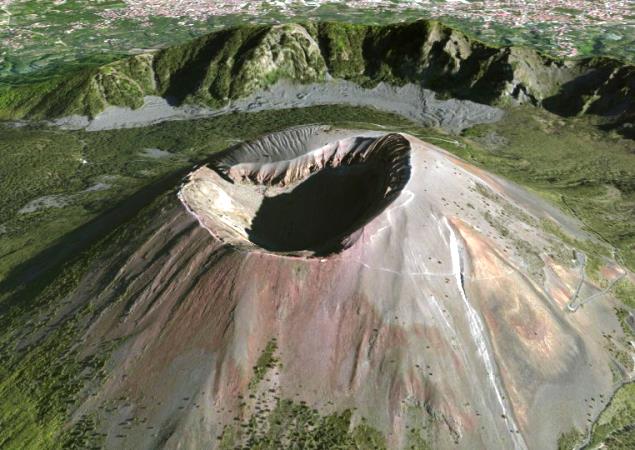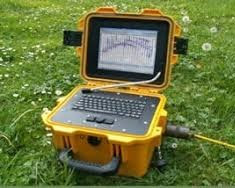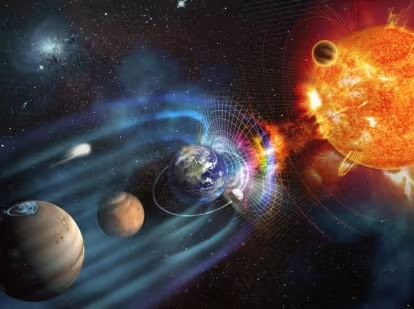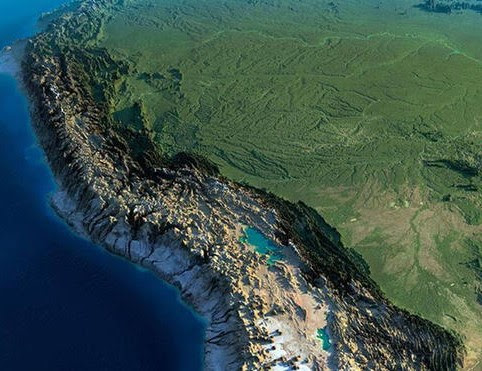Read in Spanish
The Earth, a dynamic planet for thousands of years, has shown us its activity and energy through different physical manifestations such as earthquakes, volcanic eruptions or by the movement of its tectonic plates. All these manifestations have their origin from the interior of our planet. At several hundred kilometers deep, the Earth is a hot planet that is in motion due to the high pressures and temperatures inside, it transmits heat through the different materials and surrounding media until it reaches the Lithosphere where it is going gradually cooling down. But how is the heat inside the Earth transmitted?
The terrestrial globe is made up of rocks, metals and chemical elements that make up the geosphere, divided into three main layers. The crust that measures approximately 70 kilometers; the mantle (the intermediate layer) that is formed by rocks in a semi-solid and liquid state and has a thickness of 3,000 km and, finally, the deepest layer, the nucleus where the highest pressures and temperatures on Earth are recorded, from up to 6,000 degrees centigrade.
When the Planet formed, the Earth's crust cooled until it solidified. However, the lower layers did not do so as quickly as the crust works as an insulator, allowing the mantle and core to maintain their high temperatures. In this way, the Earth works as a great thermal machine, capable of generating its own heat and conserving it inside the globe. (one)
But the heat that is concentrated inside is not static, but is actively in motion, being transmitted from the core to the mantle in different ways. The ways in which Earth's heat is transmitted are by conduction, convection, and radiation. However, all three have different degrees of importance in the different layers of the Earth: in the crust the main means of heat transport is conduction, while in the mantle it is convection and radiation.
Conduction is the way heat is transported from a warmer body to a cooler body with which it is in contact. The efficiency of this depends on a property of the materials that is called thermal conductivity and that tells us what the temperature difference will be caused by a heat flow: the higher the conductivity, the smaller the temperature difference through the material. An example of a good conductor is a metal bar, which when heated at one end will immediately conduct heat to the other end. On the other hand, an example of a bad conductor would be wood, ceramics and air.
Convection is a slightly more complex process that occurs only in fluids (liquids and gases). As the lower part of a fluid is heated, it will expand and become less dense than the colder upper part, so it will tend to rise, so that the cold part will now be in contact with the heat source, repeating itself. forms the process and giving rise to what are called convection cells, in which there are updrafts and downdrafts. This mechanism is going to be generated from a certain value of the temperature difference and depends on the viscosity and density of the fluid.
Radiation is a form of heat transport that is important at high temperatures; In reality, all bodies that have a temperature above absolute zero (zero degrees Kelvin or -273.15 ° C) emit radiation, but the frequency of the radiation emitted is proportional to the temperature of the material: humans emit radiation in the infrared and a piece of iron heated to very high temperatures will begin to emit in the visible spectrum.
In this way we observe that the heat transport inside the Earth will depend on the temperature and the characteristics of the material. The crust behaves like a solid and has relatively low temperatures. The mantle behaves like a fluid and since convection is much more efficient in this case, this is the main means of transport, even though the relatively high temperatures make it possible for energy to also be transported through radiation. (two)
"Geophysics is the science that is in charge of the study of the Earth from the point of view of Physics. It investigates and analyzes the origin of various natural phenomena such as tsunamis, earthquakes, volcanic eruptions, etc., using indirect tools for its study by taking as a basis quantitative methods and methods based on measurements of gravity, magnetic, electromagnetic or electrical fields. " - Science and Geophysics
BIBLIOGRAPHIC REFERENCES
(1) https://www.sostenibilidadedp.es/pages/index/el-calor-de-la-tierra
(2) http://bibliotecadigital.ilce.edu.mx/sites/ciencia/volumen2/ciencia3/058/htm/sec_4.htm
BIBLIOGRAPHIC REFERENCES
(1) https://www.sostenibilidadedp.es/pages/index/el-calor-de-la-tierra
(2) http://bibliotecadigital.ilce.edu.mx/sites/ciencia/volumen2/ciencia3/058/htm/sec_4.htm





























0 Comments:
Publicar un comentario
No olvides de escribir tu opinión personal de nuestro blog, una página o información que desees comprtir. Todos los éxitos para ti. Gustavo Zavala.